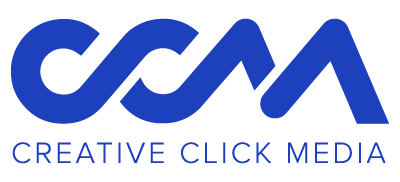Copywriting is, by definition, writing copy for the purpose of advertising. This copy is created to increase brand awareness and ultimately persuade a person or group to take a particular action. With most traditional advertising going by the wayside, digital marketing is at the forefront of today’s advertising methods. A key part of this type of advertising is content marketing.
What is Content Marketing Online?
Content marketing encompasses the creation of all the writing found on a website from page copy to blogs. Copywriting is the driving force behind content marketing online. While many aspects of copywriting have withstood the test of time, effective content marketing online goes beyond catchy tag lines and perfect grammar. That’s not to say these aren’t important, just that there are additional aspects to consider when creating content that will make both your target audience and Google happy. The process of creating this type of content is often referred to as SEO copywriting.

The Art of SEO Copywriting
In its origin, SEO copywriting revolved around the use of keywords. These are words or phrases people commonly type into the search bar when researching a specific topic on the internet. Identifying high-volume keywords relevant to your topic and including them will increase your content’s likelihood of being recognized by various search engines, especially Google.
This process has traditionally involved not only the copywriter but also an SEO specialist. The SEO specialist would identify the best keywords and the copywriter would create the content around those keywords. Despite a copywriter’s best efforts, the focus on SEO often led to wordy webpages and bloated blogs – the result of keyword stuffing. While attempting to drive a website closer to page one, it typically didn’t engage the targeted audience.
In content marketing online, having awkward keywords or constantly repeating a keyword or phrase tends to devalue the quality of the writing itself and the information the content contains. If the reader doesn’t view the content as valuable or authoritative, they typically lose interest and leave your site. Without engaging your audience, it is impossible to convert them.
The trick isn’t just to include the keywords often enough to be recognized by the search engines, but to include them seamlessly within content that will engage your audience. This has led to a much closer collaboration between copywriters and SEO specialists. In some cases, it has even led to a complete convergence of the two. The intended result of this collaboration is content that engages your target audience, extending their time exploring your website and ultimately, leading to the desired conversion.
[tweet_box design=”box_09″ float=”none”]Without engaging your audience, it is impossible to convert them.[/tweet_box]
Keywords vs Relevant Content
An article in Search Engine Journal sites content among the top 4 ranking factors for 2017. With that in mind, how does a copywriter/content marketer go about creating effective content? What is more important, keywords or comprehensive, relevant copy?
Research done by Kissmetrics in 2016 found that just 53% of the top 20 queries have keywords in their title tag, and less than 40% of landing pages have keywords in their H1s. H1s and H2s are the headings and subheadings used in the copy. While keywords remain significant, there has been a shift in recent years, putting more focus on quality content.
While Google’s ranking process involves hundreds of factors, the research does show that Google is evaluating content based on its relevance, not strictly on incorporating keywords. If your audience and Google are both in search of higher quality content, what’s an SEO copywriter’s next step?
Know Your Target Audience
Finding out who your target audience is and what information they would find valuable leads back to keyword and other technical research. Without truly understanding who your audience is, even the best content will have little impact.
Creating marketing personas, studying Google analytics, and doing competitor and keyword research has traditionally been the responsibility of the SEO specialist. Such in-depth knowledge can be invaluable to copywriters as well. As previously mentioned, SEO and content marketing departments are becoming intertwined. Beyond the technical aspects of SEO, knowing the audience allows a copywriter to create content that speaks to them and makes a connection.
[tweet_box design=”box_09″ float=”none”]Without truly understanding who your audience is, even the best content will have little impact.[/tweet_box]
Quality Content Marketing Online
Once you’ve become acquainted with your audience, it will be easier to choose relevant topics they will find interesting. With topics and keywords in hand, it’s time to start writing.
 The Mechanics
The Mechanics
Before you dive right into writing the copy, be clear about its purpose. Creating an outline creates a roadmap to provide direction while writing the copy. It should highlight the information to be included and the order in which it will appear. An outline can be detailed or it can be a basic list of potential H2s. There simply needs to be some sort of structure to keep the writing on track.
With the outline in place, just write. Don’t overthink it or correct grammar and typos as you go, just write as much as you can. Concentrate on volume. Unnecessary information can be deleted and clumsy language reworked during the editing process.
The copy should be scannable and easy to digest. Break it up into smaller paragraphs, use headings, subheadings, and bullet points if applicable. More often than not, readers scan an article or blog first to see if it is worth their time. Long paragraphs with few headings can be visually overwhelming, causing a reader to move on to something else. This is especially true when it comes to viewing copy on mobile devices.
Basic structuring takes place during the writing process and is refined when it comes time to edit. In addition to sentence and paragraph structure, make sure the writing flows. Read it out loud if possible. Is it an easy read or do you find yourself stumbling over your own words? If the writing trips you up, rework it.
Proofread the copy and then proofread it again. Nothing can steal the power of a piece of writing faster than poor grammar and misspelled words. Proofing your own work can sometimes be difficult because you know what it’s supposed to say and you will read it that way. There are tools that can help with the proofreading process such as Grammarly or the readability application of the WordPress SEO plugin, Yoast.
Finally, optimize your title. It is one of the first things that appear in a search. An attention-grabbing title can be the difference between your copy being read or passed by. It is the most important part of your content and a key factor for SEO.
 SEO Checkboxes
SEO Checkboxes
This is where your keyword comes in. Make sure it is included in all the important places: the URL, title, the first paragraph, at least one H2, image file names, and ALT tags. The keyword should be scattered appropriately throughout the body of the copy. This is referred to as keyword density and Yoast currently recommends it be between .5% and 2.5%. The recommended keyword density has decreased as Google algorithms have begun to focus on lowering the rank of low-quality sites with keyword-stuffed content.
Both the title and the meta description should contain the keyword as well. It is optimum for it to be at the beginning of the title, but not necessary. In addition to the keyword, the meta description should also contain a call to action.
Integrating visual content into your copy is equally important for SEO. Viewed as an indicator of high quality by Google, it entices visitors to remain on your site longer and decreases bounce rates. It is vital that all images have the keyword in their file name as well as the ALT tag.
Include both internal and external links in your copy. This will provide readers with additional information and can keep them on your site even longer. Google views these links as indicators of authority.
Making sure that you’ve checked off all factors that should be included in your copy for SEO is part of the editing process. With experience, many of these factors will be included organically during the writing process.
 The Creative Process
The Creative Process
All writing is creative, even SEO copywriting, and every writer has their own process. There are numerous blogs and articles claiming theirs is the best system for copywriting. It is best to experiment and find out what works best for you. Don’t be discouraged or disappointed if you don’t stick to that process every time. Inspiration often takes its own path.
My own process for content marketing online follows a loose formula. As I am typically writing for clients, I begin with research on my chosen topic. It is important that I have a good understanding of the topic and that my copy will answer questions or help solve problems the targeted audience may have.
It doesn’t matter if I am passionate about a topic or writing about something that holds little interest for me. The research sparks creativity, either by building confidence in my knowledge or the excitement of learning something new. From there, I craft the title and write the first paragraph. This can often be the hardest part for me. Both are often revised numerous times before the copy can be continued.
Once I am past that, the writing starts to flow. My outlines are usually just a list of H2s and maybe a few reference links. The copy can sometimes present additional questions that require more research. You might think this would disrupt the writing, but additional information just fuels the writing. What really trips me up is trying to edit as I write. I agree it’s best to just write, get all your ideas out, and then go back to edit. Try as I might, I don’t always adhere to this suggestion.
Once the copy is completed, serious editing begins. I rely on my own skills and those of my fellow writers as well as the previously mentioned tools, Grammarly and Yoast. Yoast is specifically helpful in making sure I’ve hit all the SEO checkboxes.
Mastering the Balancing Act in Content Marketing Online
The art of SEO copywriting will continue to evolve, as will Google’s ranking factors and algorithms. There is a delicate balance between creating copy that truly engages your audience and satisfies Google. The rules of the SEO game are constantly changing, but engaging those that make up your target audience will continue to be the ultimate goal of content marketing online. Incorporating the mechanics and SEO checkboxes into your own creative process can be the recipe for success.














